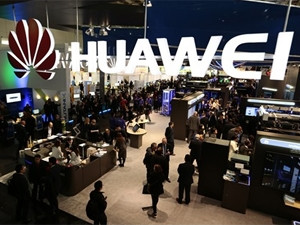
It is estimated there will be 100 billion communication points by 2025, which means cities, organisations and service providers need to become very smart, very quickly, as everything becomes connected to everything else.
A big shift is heading our way. From simply using smart light bulbs to becoming part of the smart power grids; from stopping at red robots, to vehicles connecting to sensors for better traffic management.
These 100 billion connections and 6.5 billion Internet users are said to create 1 766 zetabytes of data, as by 2020, 88% of services will be based in the cloud. In other words, we will need more Internet access than ever before, as everything becomes reliant on connectivity.
These connections need to be managed in order to ensure services are delivered without any loss of quality or hesitation. However, considering that, currently, 70% of the network capability is being wasted due to packet loss and delays, how will such vast amounts of near-future connections be managed?
At CeBIT 2015, I sat in on the Huawei Enterprise press briefing in order to understand how Huawei has managed to become a leader in the movement of data at such vast quantities.
Four components of the smart future

Ding Yun (Ryan Ding), executive director of the board, and president of Products & Solutions at Huawei Technologies, explained that for the connected world to become a reality, there are four components that need to come together: Smart city, smart grid, 4k omni-media (for streaming 4K definition video feeds), and omni-channel finance (for faster and more efficient banking services).
However, these components have challenges that all rely on the underlying networks. Slow networks mean citizens of the city can't connect to emergency services; the city can't detect safety issues; transmission of power is inefficiently distributed; and users experience an inconsistent experience when streaming, moving and using banking systems via their various communication devices.
Change is compulsory

To address these, the ICT industry is forced to change from being a support system to a becoming part of the production value system. In other words, receiving e-mails and watching YouTube on a mobile device is no longer good enough. IT needs to deliver much smarter services.
As part of Huawei's vision of: "Innovative ICT, building a better connected world", the company has reinvented the traditional network by introducing Agile Networks, which was explained by Stefano Giachetti, director of the Western Europe Fixed Network Solutions Sales Department at Huawei Technologies.
Huawei's Agile Network has several advantages over traditional networks, as they are able to marry current IP-based networks with optical networks, which has unlimited bandwidth and speed.
Currently, QOS is used to split the available bandwidth so different applications can be given priority over others, eg, e-mail has priority over YouTube. Huawei has reinvented this too, by introducing an IP hard pipe, which prioritises key services not only with software, but with hardware, which results in a five times reduction in packet loss.
Another innovation gives users the ability not only to monitor if network links are up or down, but to delve deep into the network and examine live traffic to understand where issues might occur.
Huawei is all about innovation, partnerships

Huawei's secret is investing heavily into Research and Development (R&D). Over the past 10 years, it has invested $30.7 billion, and in the past year alone, the company invested $6.5 billion into R&D.
The key is to develop global partnerships where each innovation lab around the word focuses on specific areas of the business. In France, the aesthetic lab was created to focus on the aesthetics of devices, whereas the innovation lab in Russia focuses on mathematic algorithms. In Japan, the lab focuses on the physical material used to build hardware.
At the press conference, Huawei showcased its eLTE Broadband Trunking solution, Agile Wide Area Network solution, OceanStor 9000, and Next Generation Anti-Distributed Denial-of-Service solution. The core reason for these technologies is to provide the next generation of networks that will have to deal with information overload and process it faster than ever before.
Looks like all that investment into research is paying off.
* Liron Segev was at CeBIT as a guest of Huawei Enterprise.
Share